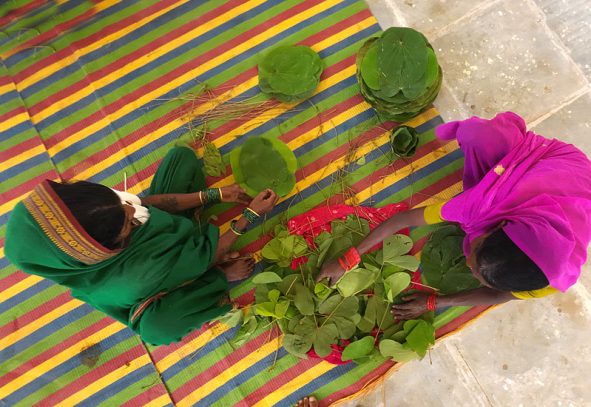Brooms & Superstitions

While superstitions surrounding our lives might be a big turn off for the present generation, probing slightly deeper may reveal reasons deeply ingrained in our value system. However, it may also not be entirely correct to accept them, it is nonetheless interesting to know about their origins. In Indian households we get told off by our elders if we accidentally touch a broom with our feet, they say ‘it is an embodiment of Lakshmi, brings wealth into the house by taking away dregs and dust, do not dishonor it.’

Broom Maker
A broom is considered a sacred utility in Indian households. In rural India, it is the first thing that a lady of the house picks up at the break of the dawn, to clean the courtyard and the porch. Called by names like ‘Jhadu’, ‘Bhuari’ etc, it is regarded as feminine and often associated with the ‘Goddess of wealth’.

Besides being an indispensable tool of daily use, a broom also has a religious significance. In Jainism, monks and nuns keep a broom with them to keep out insects and animals from their paths as they walk. It prevents killing them unconsciously and is considered as an act of non-violence. Goddess ‘Sheetala’, worshiped in Hinduism, Buddhism and some tribal cultures holds a broom in her right hand. She is a goddess associated with smooth transition of seasons and prosperity. In some cultures, brooms are used by ‘Tantric healers’ to cure psychic problems (again the symbolism of warding off mental dirt).

For an object as simple as broom, Indian craft communities have come up with more than a hundred varieties, utilizing different plant species and construction techniques found vernacularly. India is home to 537 aboriginal tribe communities and every community has their long established methods of living in harmony with surroundings by valuing, preserving and using wild forest resources to their benefits. Several wasteland species and seasonal grasses are used for making brooms. In some regions, waste of harvest, fine twigs, hay, straw, plant leaves are also used.

Material for making brooms changes with usage and area of application. To brush aside dust from smooth floors, a broom with fine strands is used. For sweeping water or other fluid materials, a broom with thick and stronger strands is used. For sweeping pliable areas such as grass or open land, a broom with branched strands is used.

The basic process of making a broom starts with procuring the strands of approximately same length. These are then formed into a bundle and tied together from one end. To increase the gripping comfort, around one fifth of the holding side of the broom is wound with thread or dried grass strips and tied. The process involves various simple tools, which are used to cut, slice or shred the base straw into finer lengths.

Furthermore, several innovations have been done to make brooms aesthetically more pleasant and robust in construction. In central region of India, artisans make brooms with palm leaves. The leaves are shredded with a teethed tool and then two or three shredded lengths are joined by braiding. The resulting broom is quite unique in its form with braided strands throughout its length.
From ‘Witches’ on a broomstick to peacock feathered ‘Tantrics’, brooms have fairly managed to enrich our folklore and domestic lives. Ever heard of a broom, which is sentimentally attached to its owner? There cannot be any, because as the myth goes ‘A broom gets attached to the place it sweeps and so, to respect its sanctity and its relation with the place, the owner never takes it along when shifting places’.
Buy Unique Brooms online ~ shop.gaatha.com











Aditi
Awesome post. Loved reading it.
Aditi
Shruti
Quality of Content, and the depth of information, along with a great selection of appropriate photographs to support the content – way to go guys!
Madan Meena
See the website for Broom Museum in Jodhpur – http://www.arnajharna.org
gaatha_home
thanks Meena
Santosh Chahar
Deep insight into our cultural heritage of showing respect for brooms.
Kumar
You need to do more innovations in developing vertical brooms with very long handles because our traditional small brooms are very bad for the back. Due to Corona virus lockdown maids cannot come and clean the house. Owners themselves have to sweep the house and it is very difficult with our small brooms as we have to constantly bend when sweeping which creates a lot of pressure on the back. Why dont you make vertical brooms with very long handles so users dont have to bend and hurt their backs when sweeping the floor?